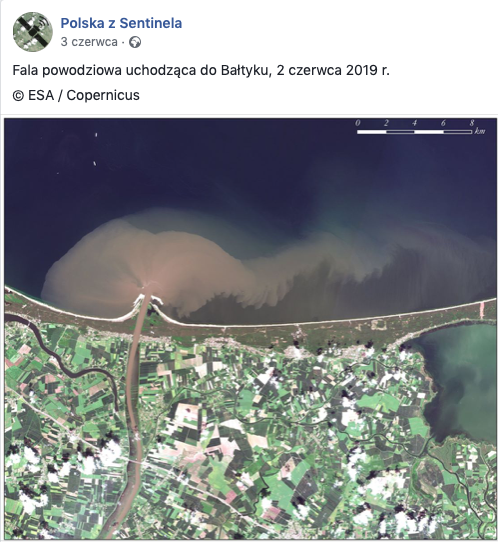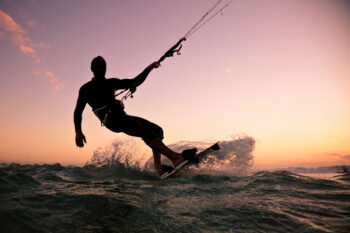
Sewage from Warsaw flows to the Baltic Sea. Is Jurata safe?
Transmission system failure
At the end of August this year, a collector supplying sewage from left-bank Warsaw to the "Czajka" sewage treatment plant located in Białołęka, Warsaw, was damaged.
As a result of the failure, the transmission system was unsealed, as a result of which the sewage flowed directly into the Vistula. According to information provided by the Municipal Water and Sewage Enterprise in Warsaw, about 3 cubic meters of pollutants went into the river with every second.
The Chief Inspector of Environmental Protection informed that by September 10, MPWiK in Warsaw had accidentally discharged over three million cubic meters of sewage into the Vistula.
The essence of the failure is precisely presented in the diagram provided by MPWiK:
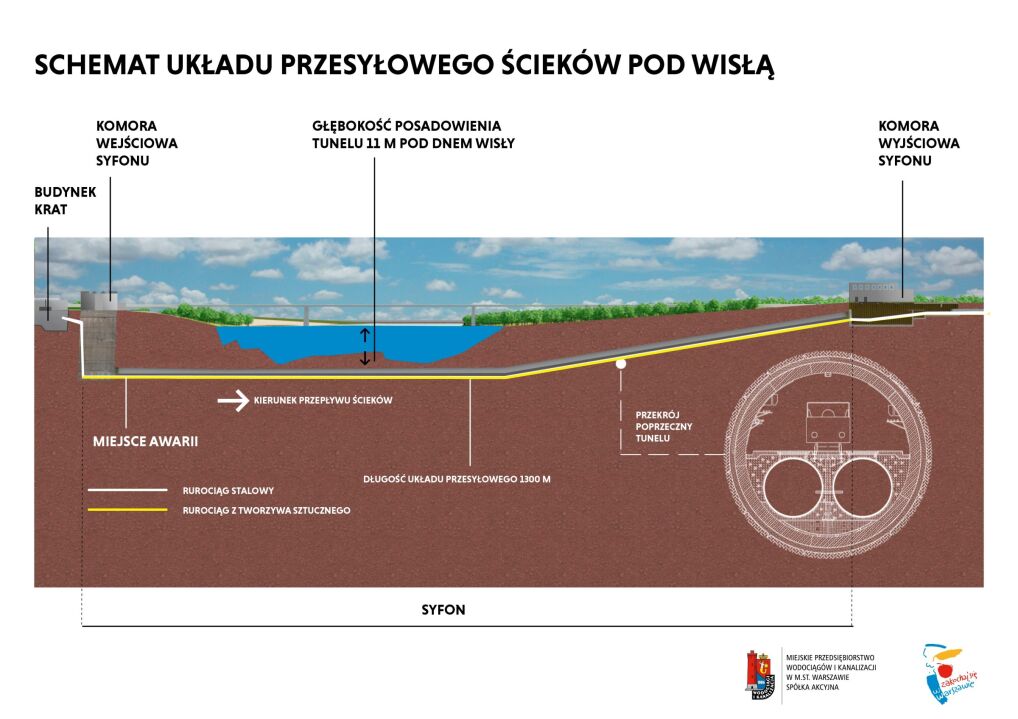
Substitute pipeline
On Monday, September 9, a replacement pipeline was put into operation, built by the army at the request of Prime Minister M. Morawiecki, which is a temporary solution to the problem. From Monday, pollution is partly discharged via a pipeline laid on a pontoon bridge, and according to the assurances of the Prime Minister's Office, this week the installation is expected to reach 100% efficiency.
However, this is not a permanent solution, as the pipeline can work until the temperature is lowered. When winter frosts come, the entire installation will have to be removed and replaced with another one that runs above the water.
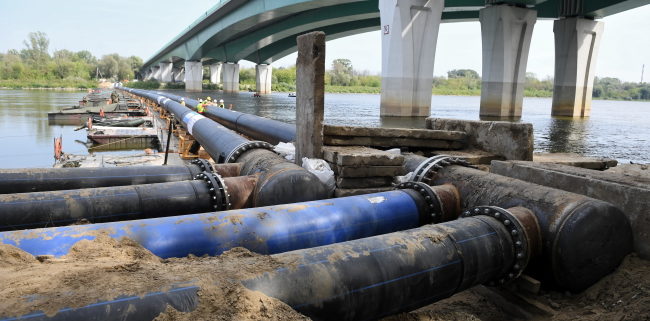
Earlier this week, a wave of sewage reached the Baltic Sea
In the water sample from the bathing beach in Stogi in Gdańsk, the number of E.coli bacteria exceeded the norms, informed the Pomeranian Provincial Sanitary Inspector. So far, it is the only sample in which the excess of E. coli bacteria has been detected. Anna Obuchowska - spokesman for the Provincial Sanepid in Gdańsk, emphasizes:
"This is not a big excess, because the standard is 1000 NPL / 100 ml, and we got 1120 NPL / 100ml, while the number of Enterococcus bacteria meets the sanitary requirements"
According to media reports, most of the Baltic States also became interested in the matter, alerting them to possible catastrophic consequences for the state of the sea. In turn, the Baltic Marine Environment Protection Commission (HELCOM) called on Poland to provide information on sewage discharge. In accordance with the assurances of the head of the Chancellery of the Prime Minister, today we can expect a presentation of the official position of Poland in this matter.
As reported by the representatives of the Polish Waterside, which manages the rivers, as well as representatives of the Sanepid and the Provincial Inspectorate for Environmental Protection, water samples in Pomerania are tested on an ongoing basis, and the results of these studies are optimistic:
"The wastewater flowing from Warsaw is very diluted, and the concentration of harmful substances in the water is low."
Do you need to avoid contact with water?
Each failure of this type causes a temporary increase in the concentration of hazardous substances in the water, which can cause various ailments. By the way, we calm down: dangerous E. coli bacteria occur not only in the digestive tract of animals and humans, but also in water and soil. We have contact with them on a daily basis. In the event of higher than the acceptable concentration of coliform bacteria, avoid contact with the environment in which these standards have been exceeded.
The natural course of things is to refrain from bathing and, above all, drinking water in which the presence of E.coli exceeds the permissible level. Therefore, it is necessary to temporarily avoid contact with contaminated water from the Vistula and the Bay of Gdańsk from the town of Stogi to the town of Mikoszewo, i.e. for a length of approx. 20 km, directly at the mouth of the Vistula to the Bay of Gdańsk, as requested by the Pomeranian Provincial Sanitary Inspector.
Watch out for fake news!
In recent hours, a satellite photo has become very popular on the web, showing the allegedly visible wave of sewage from Czajka, flowing from the Vistula directly into the Baltic Sea, more specifically into the Bay of Gdańsk. The photo shows the non-existent phenomenon of mixing Warsaw's sewage with the waters of the Gulf of Gdańsk, but it caused a great stir and a wave of comments in social media.
The photo itself is real and was taken by the European Copernicus satellite network. However, it does not show the actual consequences of the accident causing the discharge of sewage to the Vistula River, as it was performed much earlier.
The photo circulating on social media shows the mouth of the flood wave after the June flood and has nothing to do with the outage of the Czajka's transmission network!
There are also headlines in social media and the press informing about a serious threat to health and even life among people who have contact with water in the Bay of Gdansk. These messages are obvious disinformation, and their aim is to increase the views of articles and the so-called "Click-throughs" in shared content. This is a sad situation, because the content of the publication shows completely different facts, nevertheless, most people read the headlines themselves, passing on false information.
Are we in danger of an ecological disaster?
The collector's failure, which caused the leakage of pollutants to the Vistula, quickly became a bargaining chip in the ongoing election campaign.
On the one hand, we hear voices that we are dealing with an unprecedented ecological disaster, dangerous not only for the fauna and flora of the largest Polish river north of the capital, but also for the entire marine ecosystem of the Gulf of Gdansk, the Bay of Puck and the Baltic Sea itself.
On the other hand, we hear assurances that the Vistula water cleans itself and that much more other pollutants get to the Baltic Sea, which we do not pay attention to on a daily basis.
How is it really?
Marek Elas, a specialist in water ecosystems of the WWF Poland Foundation, claims that the overuse of fertilizers in agriculture is a much greater threat to the Baltic than run-off sewage, and it is an exaggeration to describe a failure as an "ecological catastrophe".
We are dealing with a situation that was just a few years ago. The breakdown concerns an installation built only in 2012. Before that time, wastewater from left-bank Warsaw ended up in the Vistula River every day and then into the waters of the Baltic Sea. This condition continued for many years and it was not as loud as it is now.
This does not mean, however, that the situation is not serious. For many years, work has been underway to improve the quality of water in rivers and at sea. The failure in Warsaw does not help to improve water purity, but there is no reason to panic.
Self-cleaning of the Vistula
As emphasized by Dr. Tomasz Jurczak - assistant professor at the Department of Applied Ecology at the Faculty of Biology and Environmental Protection of the University of Lodz, nature itself can significantly help in controlling the crisis. It also indicates that the normal flow of water in the Vistula is about one thousand cubic meters per second. Considering the amount of municipal pollutants flowing into the river as a result of a failure, they constitute only 1% of water, with 90% of waste water content being water.
The greatest threat, in turn, occurs in the vicinity of the sewage discharge site itself.
What about the water in the Baltic Sea?
Sources of pollution of the Baltic waters are ports, waste, shipping and mining. Not only municipal wastewater itself contributes to the deterioration of water quality. The coastal zone of the sea is the most vulnerable to pollution, especially in the vicinity of point sources of pollution such as sewage collectors, river mouths, ports and other industrial centers.
The sources of persistent organic compounds in the Baltic Sea are presented in the diagram below:
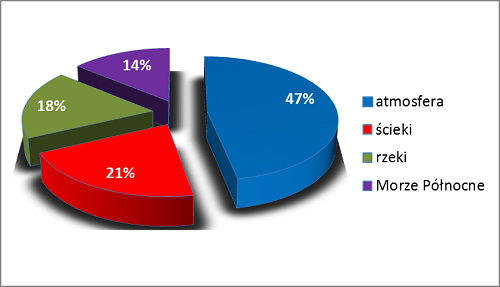
As can be seen from the above, the greatest threat to the waters of the Baltic Sea is human activity related to the processing and mining industries. Wastewater accounts for less than a quarter of all sources of pollution.
Are bathing areas along the Hel Peninsula safe?
The greatest degree of pollution of the Baltic Sea in connection with the inflow of sewage together with rivers occurs at the very shoreline, near the estuaries.
Of course, a lot depends on the sea currents and the wind direction, but it should be noted that the Hel Peninsula, in the place where Jurata and Jastarnia are located, is about 40 km away from the mouth of the Vistula. while the mouth of the river itself is already outside the Bay of Puck flowing from the south coast of Jurata. The peninsula is surrounded by the open sea from the north.
The Puck Bay itself, also called the Small Sea, is the westernmost part of the Gulf of Gdańsk and is separated by about 12 km underwater, periodically emerging embankment. This shoal is called Ryf Mew (Rewa Mew) and is a barrier partially isolating about 120 square km of the Bay of Puck.
Thus, the Puck Bay itself can be considered a specific hydrological peculiarity, as stated in her monograph by Liliana Klekot from the Institute of Environmental Management in Warsaw (Oceanologia No. 12 - 1980, PL ISSN 0078-3234 "Zatoka Pucka is a Hydrological Peculiarity of the Baltic Sea")
This means that, like the Vistula, it can clean itself, also the waters of the Puck Bay cope with pollution, thanks to the inflow of water from the open sea, also from the south. As a result, the water in the Bay of Puck is regularly replaced and washed away by the streams flowing around the Hel Peninsula.
As you can see, there is no reason to panic, and tourists can safely plan their holidays in Jurata and other places on the headland.
If any water pollution occurs as a result of the increased amount of sewage flowing into the Gulf of Gdańsk after the accident in Warsaw, it can be felt mainly off the coast of the Tri-City and the Vistula Spit. Nevertheless, these areas will also be purified over time. The coming autumn and winter are certainly an ally of this process, as well as cooling that stops the processes of multiplication of harmful bacteria.
The crash of June 2019 and May 2018 without publicity
Let us recall: in June 2019, we had a similar failure of the Władysławowo discharge collector - Swarzewo sewage treatment plant. At that time, sewage was pumped directly into the Bay of Puck.
A year earlier, on May 15, 2018, the "Ołowianka II" sewage pumping station in Gdańsk also failed, resulting in a discharge of sewage to Motława.
Both events took place in the time immediately preceding the tourist season, and the sewage flowed to the sea directly or over a much shorter distance, without the possibility of reducing its volume, as is the case today.
It should be noted that Warsaw's wastewater must cover about 400 km of the Vistula River before it reaches the Baltic. In this section, the river is natural, has many shallows and islands, and is also richly covered with vegetation. All this means that most of the pollution is "filtered" naturally by the environment itself. Such circumstances did not accompany the discharges in Swarzewo and Gdańsk.
Nevertheless, none of the previous failures had resulted in the need to close the beaches on the bay, and the disaster announcements were rather laconic and did not provoke such heated discussion.
Everything points to the fact that we are currently dealing mainly with a political game, additionally fueled by the media, which adversely affects the public perception of the entire Bay of Gdańsk basin, causing an unfair sense of a threat to safety and health, and in some reports - even life. Of course, the situation is not good, because it significantly affects the cleanliness of the Vistula, but there is also no reason to demonize, let alone duplicate false information.
Nor does it mean that the authorities should not pay more attention to preventing similar situations in the future. The most important thing in such circumstances is reliable information about the situation and taking decisive action to eliminate the failure, instead of switching responsibility, hoping for better results in pre-election polls.
Let's keep our fingers crossed for the current crash to be removed as soon as possible and hopefully there will be fewer of them in the future.
main photo: PAP source / photo: Radek Pietruszka

